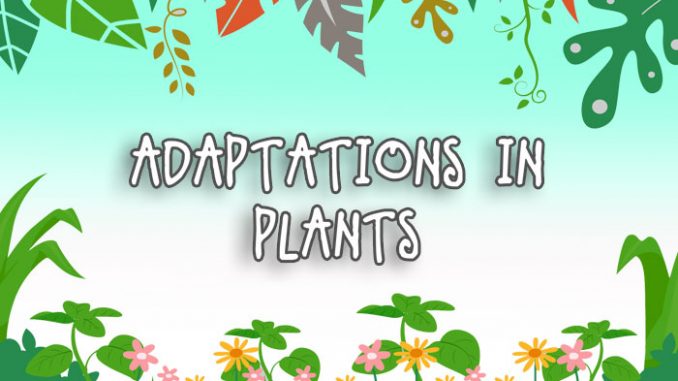
- The structural features of living organisms that develop over a period of time to enable them to survive and reproduce in a particular environment is called adaptation. In other words, it is the ability of an organism to adjust in a particular environment or surrounding. An organism well- adapted to a particular environment enables it to get necessary food, water, shelter and also its mating partner to continue its generation.
- Aquatic adaptation in plants (hydrophytes):
- A plant that is adapted to living either in waterlogged soil or partly or wholly submerged in water is called a hydrophyte.
- Hydrophytes are those plants which live in water and adjust with their surroundings.
- They are of three major types; emergent, floating and submerged.
Emergent hydrophytes:
- Emergent plants grow up from soil and are often planted or found along the shoreline of a pond. Eg. Nyphaea, Nelumbo, Nelumbium, Marsilea etc.
- Their roots are underwater, but their shoots grow up out of the water. Eg. Typha and water lilies (Nymphaea).
- Stem is long, slender and flexible.
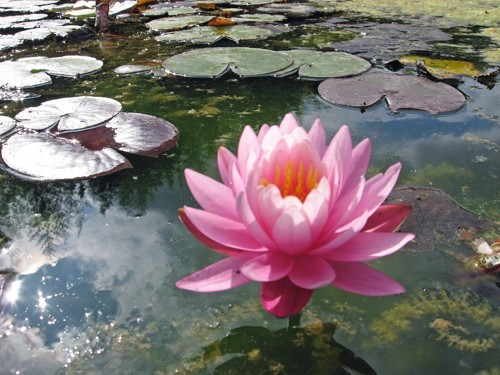
Submerged hydrophytes:
- Submerged plants are rooted. Eg. Ceratophyllum, Utricularia, Hydrilla, Vallisneria, Potamogeton
- Exchange of gases takes place through diffusion.
- Mechanical tissues like collenchyma and sclerenchyma are more or less absent and stem is long, slender and flexible.
- Stomata are totally absent.
- Xylem is poorly developed as the water absorption takes place through all over the surface of the plant body.
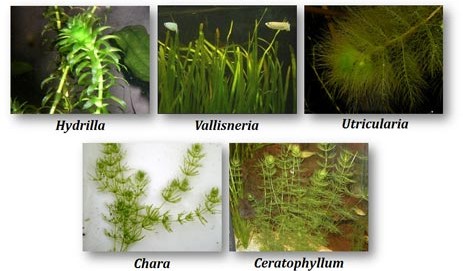
Floating hydrophytes:
- Due to availability of plenty of water, root system is of secondary importance and least significant. Hence, they have a poorly developed root system.
- Balancing roots are present in Pistia and Eichornia.
- Root caps and secondary root hairs are absent.
- They have air sacs (Aerenchyma tissue) that help the plants float.
- Cuticle is completely absent in submerged parts of the plants and their body is covered with mucilage to prevent them from decaying in water.
- They do not need soil and are not rooted to the bottom of the pond.
- They have flat large leaves with wax coating which help them easily float on the surface or water.
- Stomata are found only on the upper surface of leaves.
- Examples of floating plants: Eichhornia, Pistia, Wolffia, and Lemna)
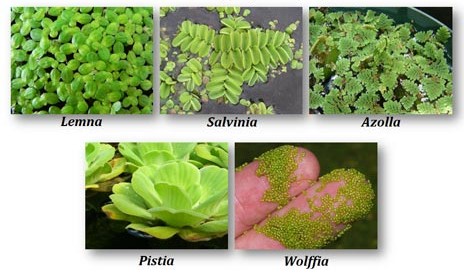
- Terrestrial adaptation in plants:
- The plants that grow on land are called terrestrial plants.
- On the basis of physical conditions on which they grow, they are of three major types; mesophytes, xerophytes and epiphytes.
Mesophytes:
- Mesophytic plants grow under average conditions of moisture and temperature.
- They usually have a well-developed root system and vascular bundles.
- They don’t have any water retention mechanism and excess of water is lost through transpiration. Eg. Peepal, mango, rose, sunflower, apple etc.
Xerophytes:
- Xerophytes grow on dry and arid regions like deserts and withstand severe drought conditions.
- Leaves are reduced to thorns or spines to reduce water loss from the body through transpiration and also for protection. Eg. Cactus and Opuntia.
- The leaves (if present) and stem have thick cuticle and covered with a waxy substance and stomata are also deeply seated to reduce transpiration.
- Stem is soft, succulent (short), spongy and green in color to store water and also for photosynthesis. Eg. Aloe vera.
- They have a well-developed tap root system which goes deep down into the soil for the absorption of water and minerals.
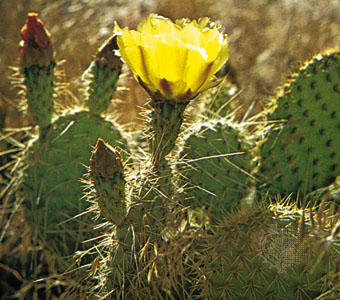
Epiphytes:
- Epiphytes grow upon another plant or object only for physical support and have no attachment to the ground or other obvious nutrient source and are not parasitic on the supporting plants. Eg. Orchids, Vanda, Polypodium , Cerus etc.
- Epiphytes obtain water from rain and water vapour from the atmosphere with the help of their aerial roots.
- They depend on the humus (for nutrients) in the barks of old trees on which they cling with the help of their anchoring roots.
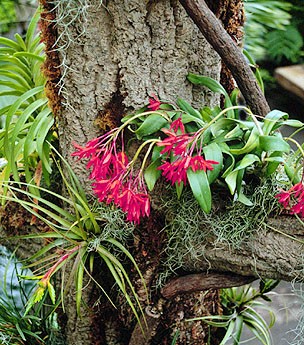
Adaptation in plants